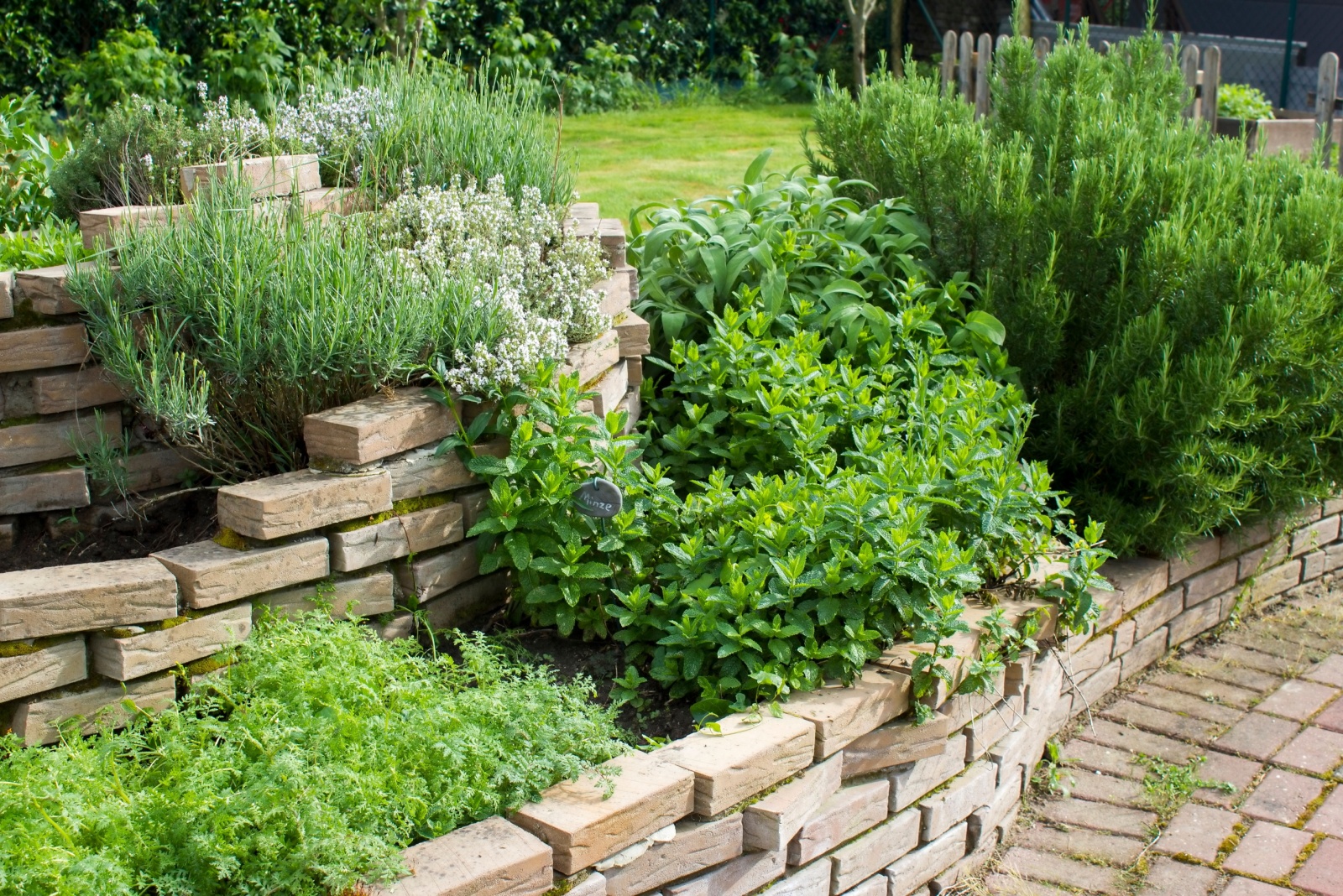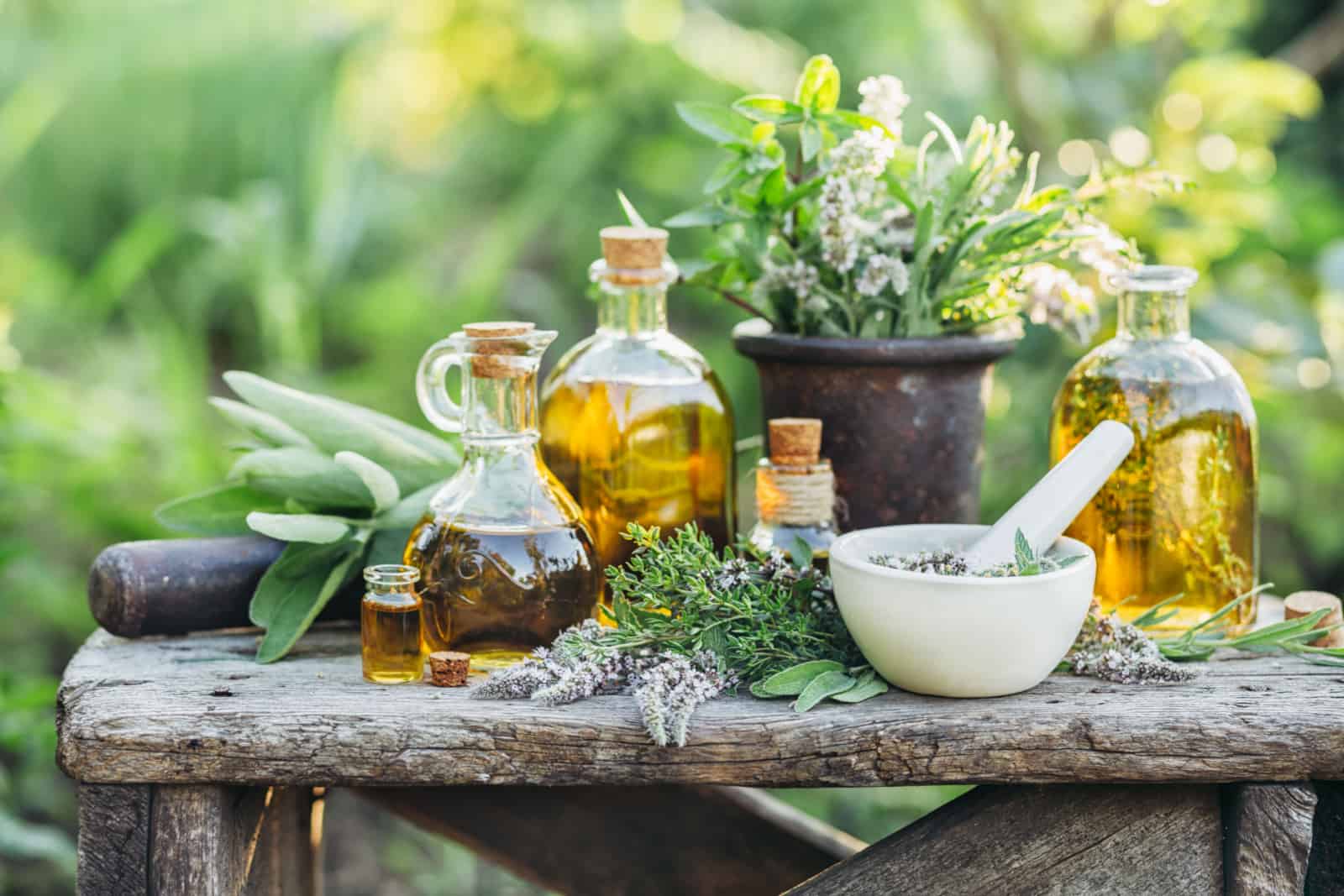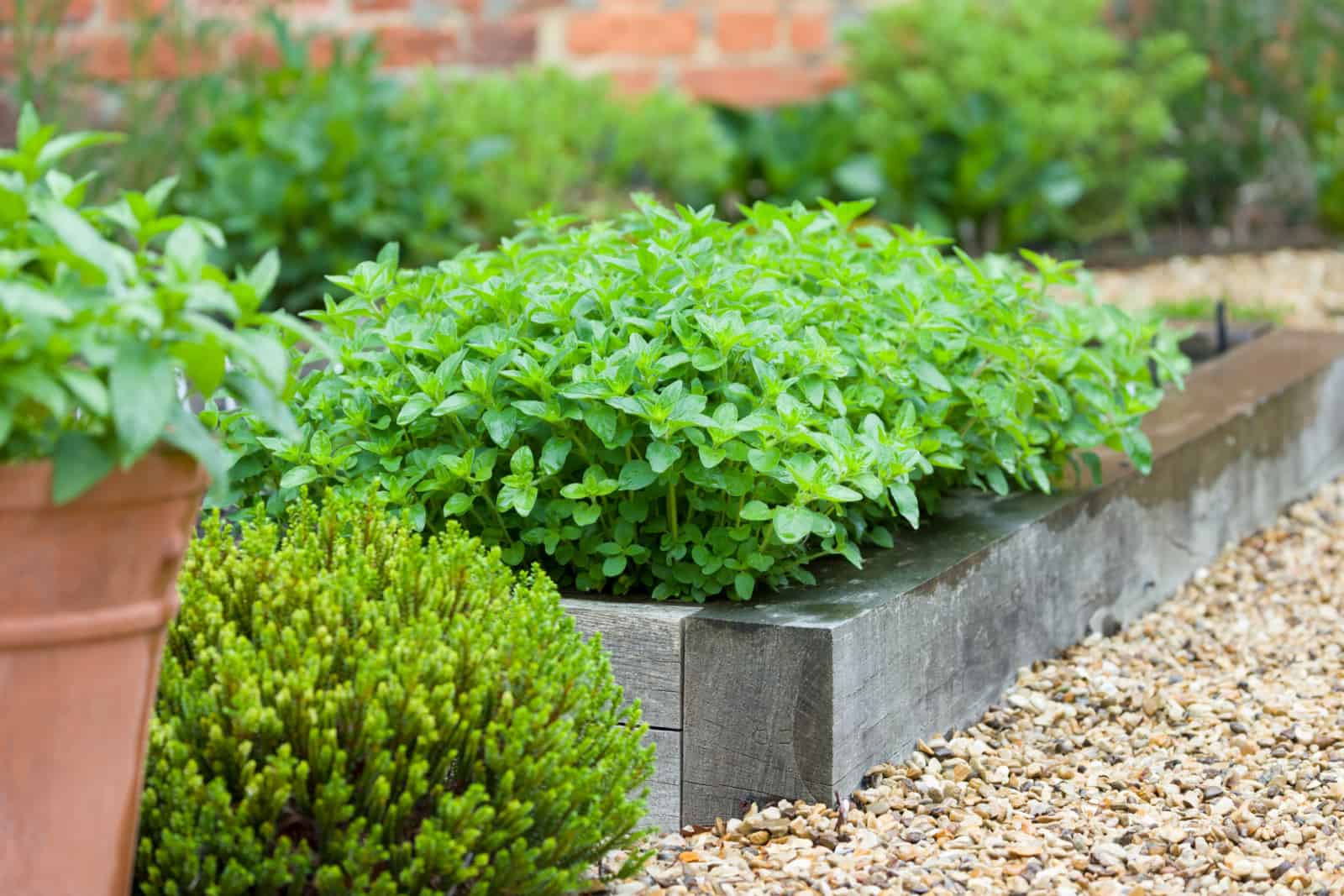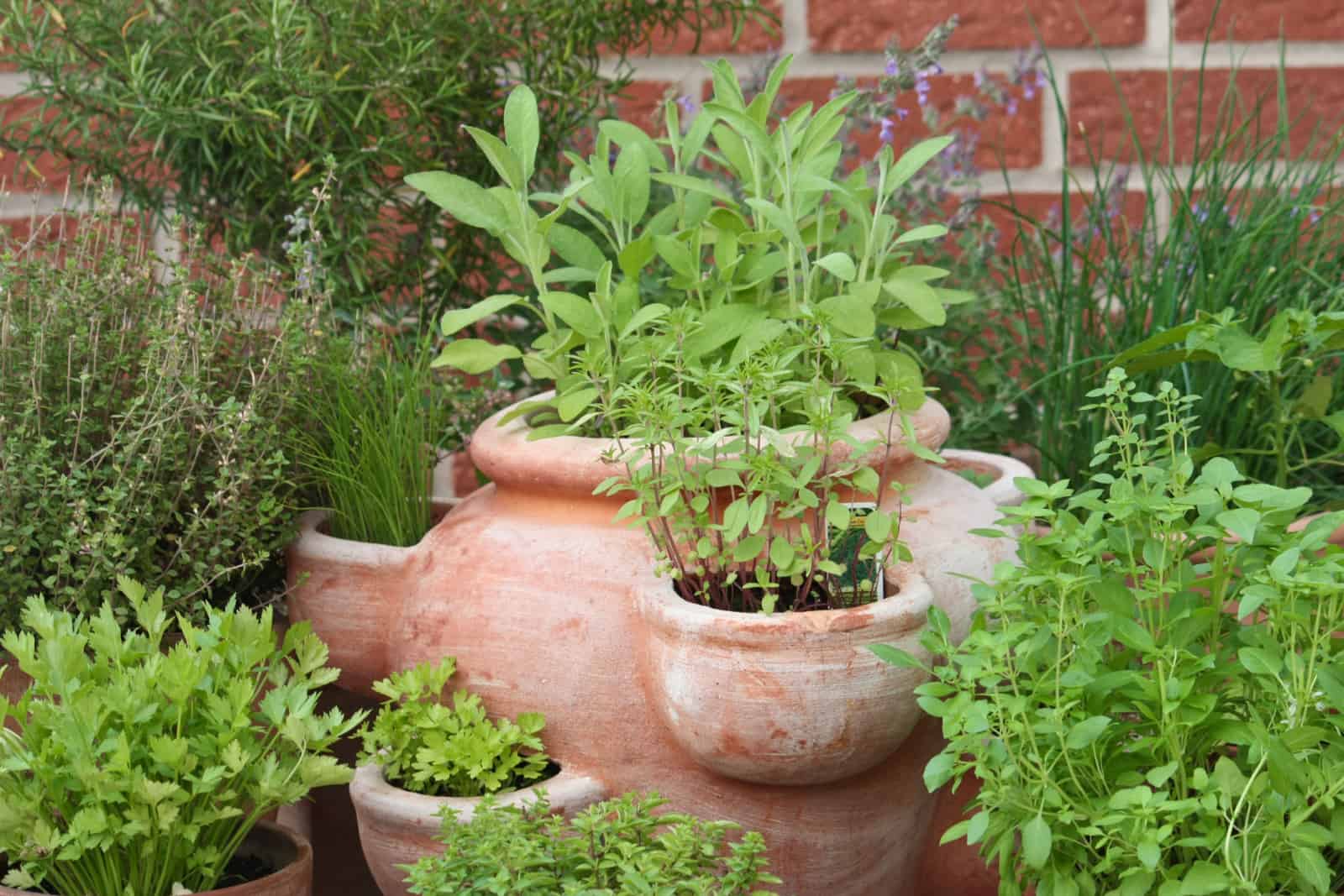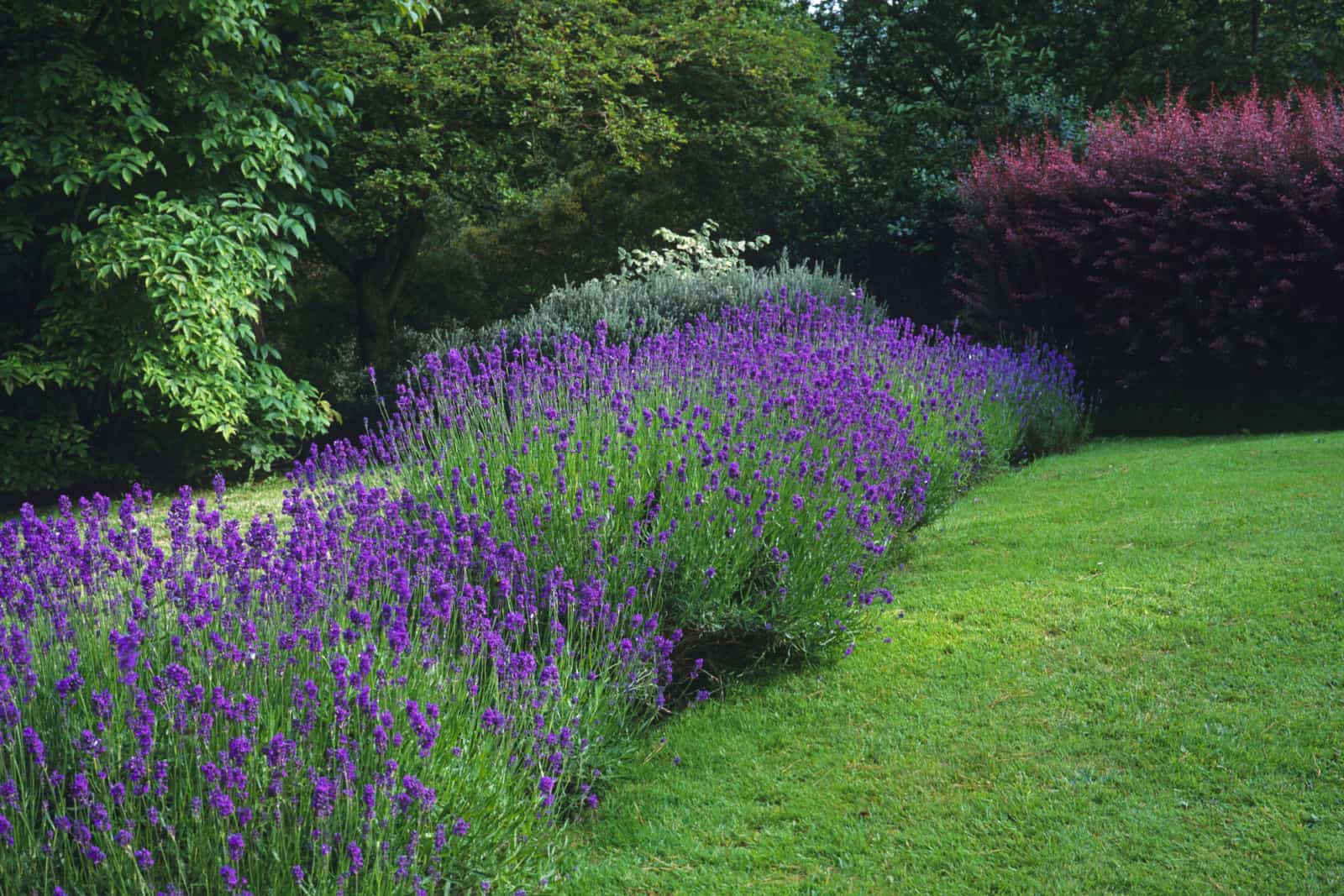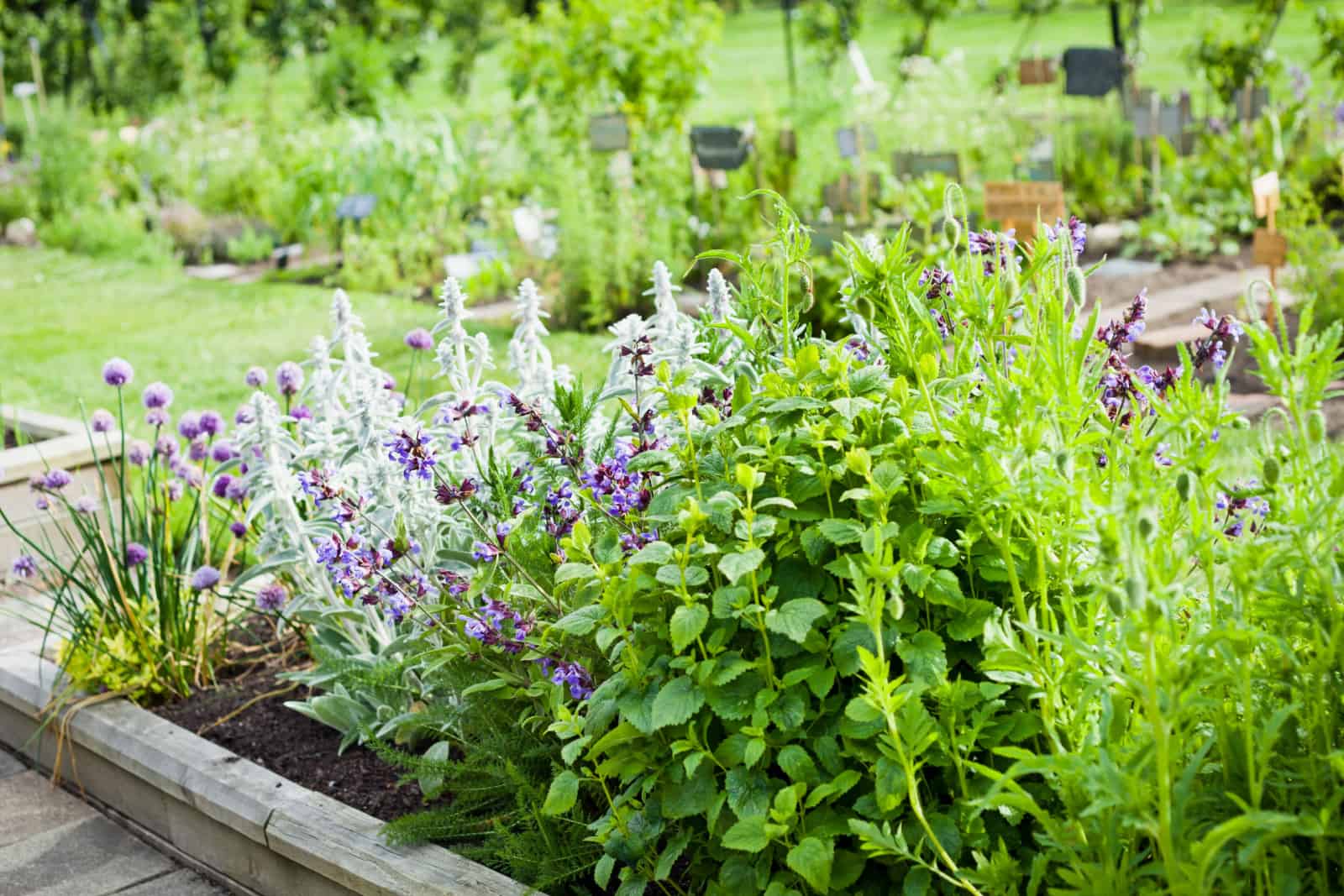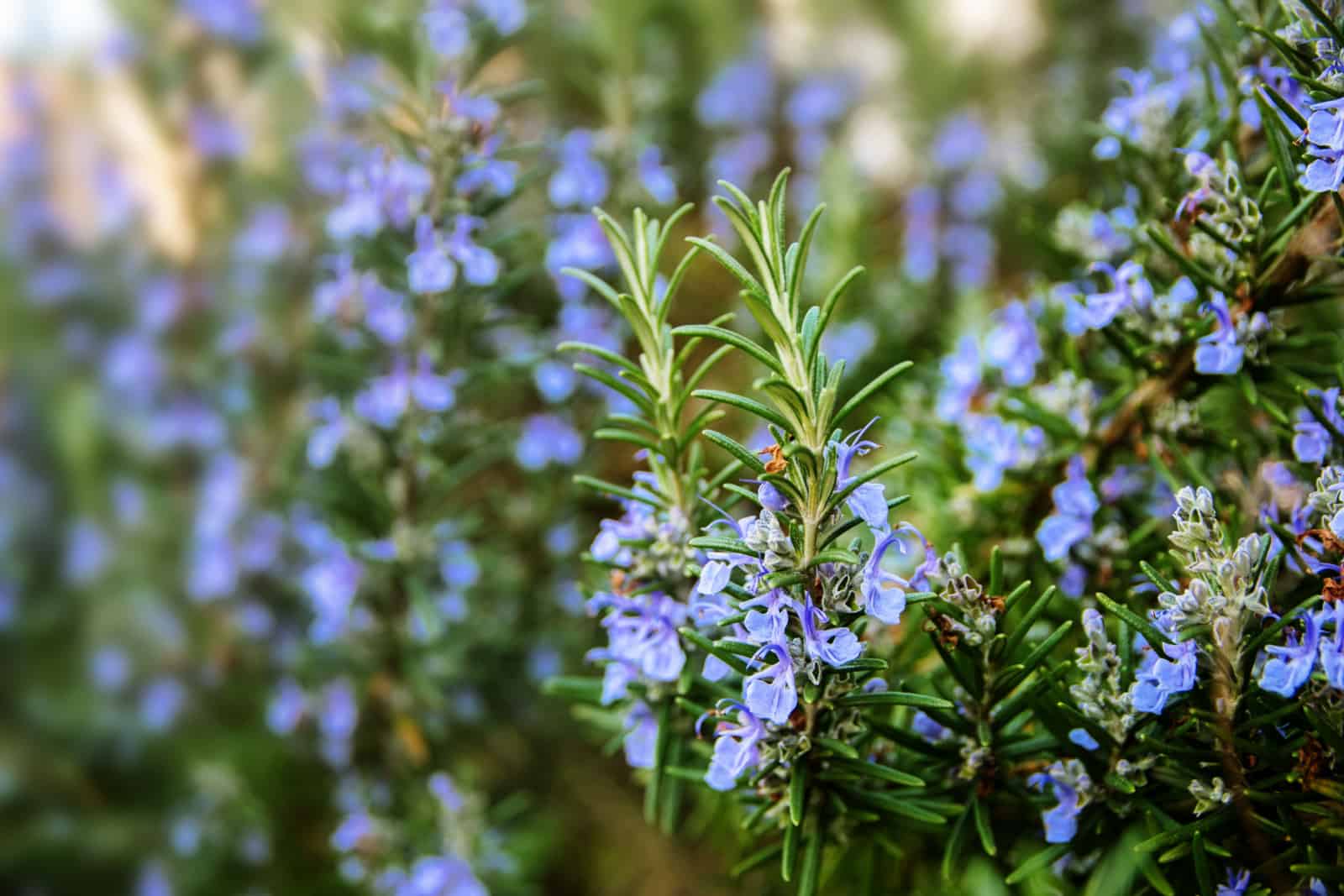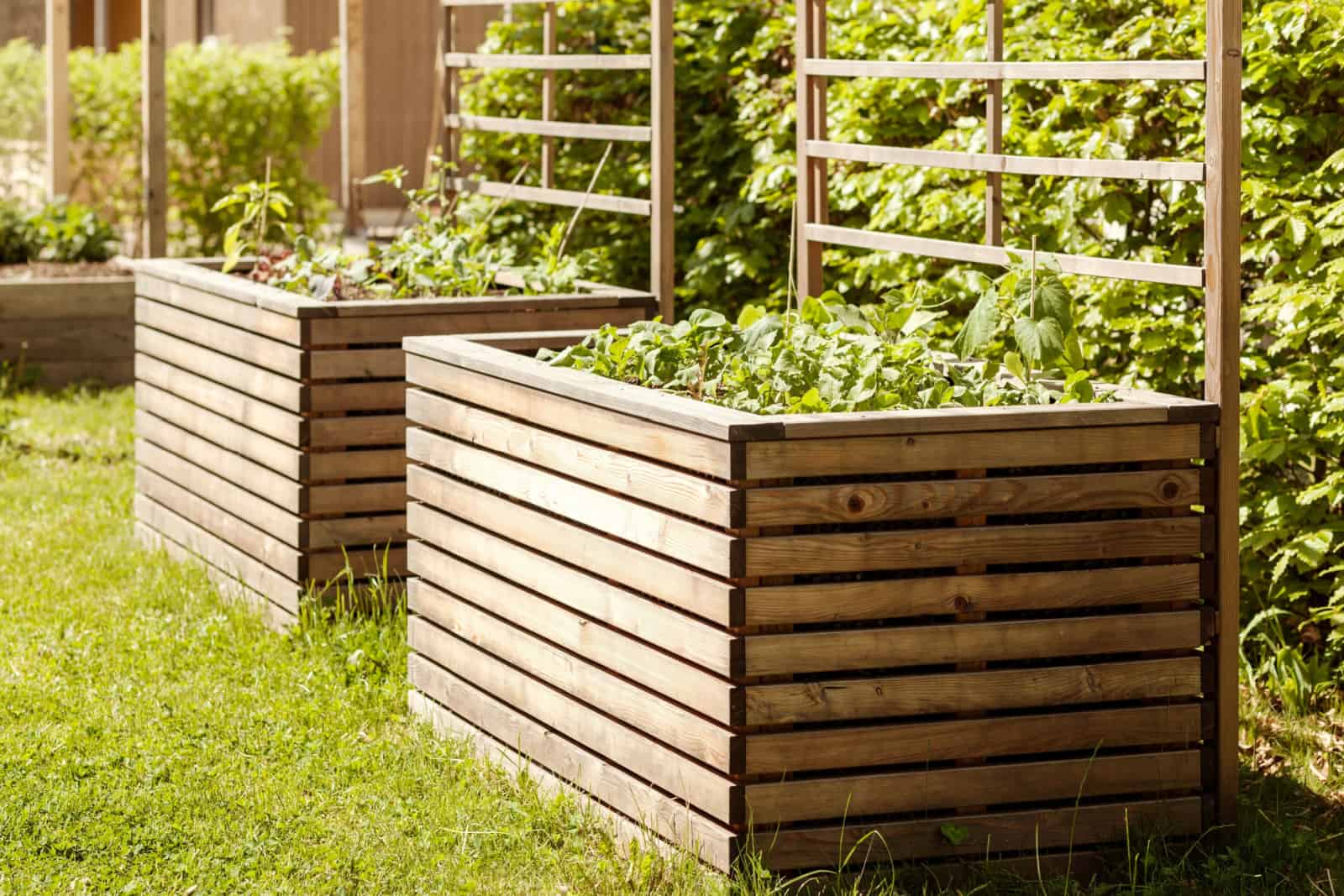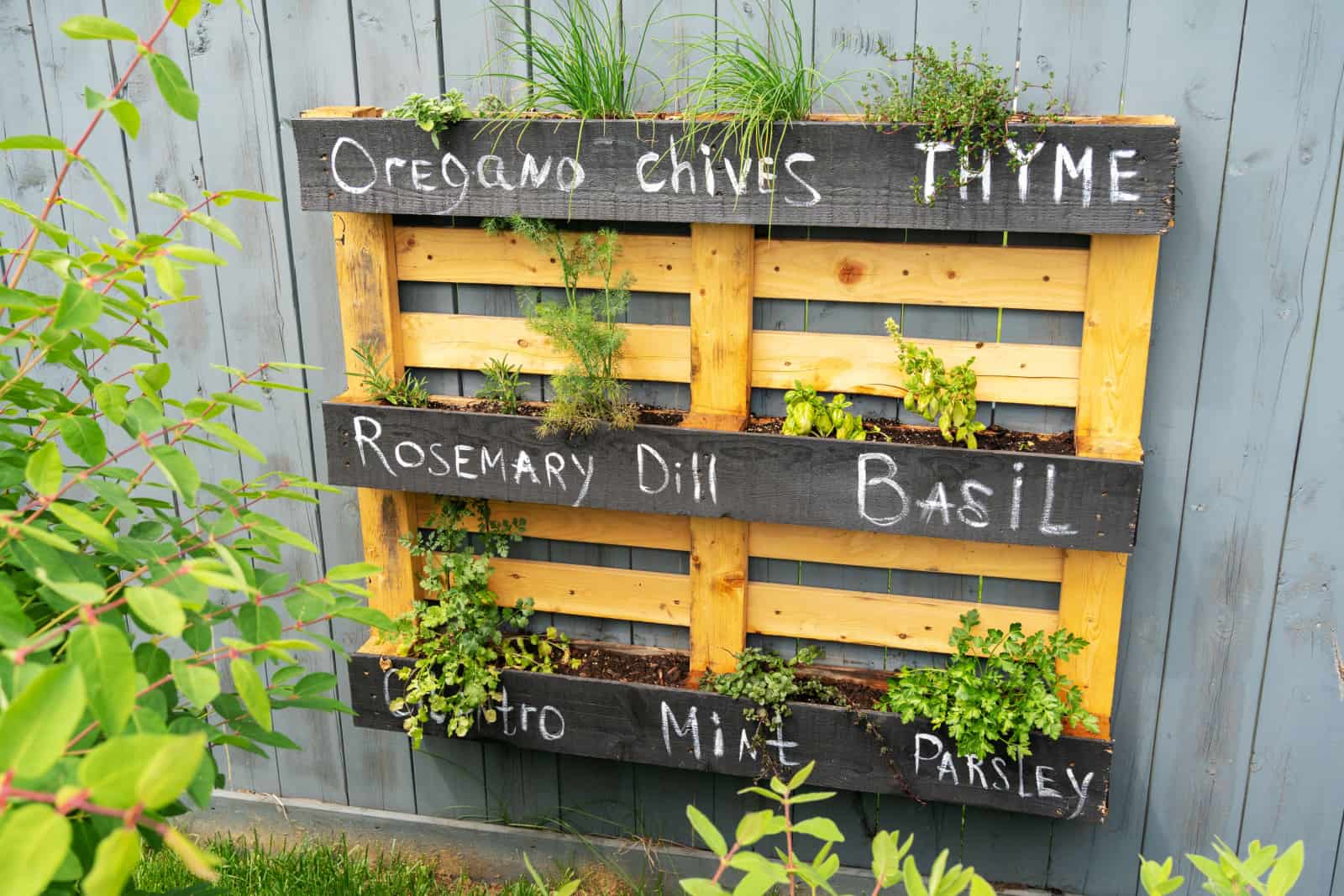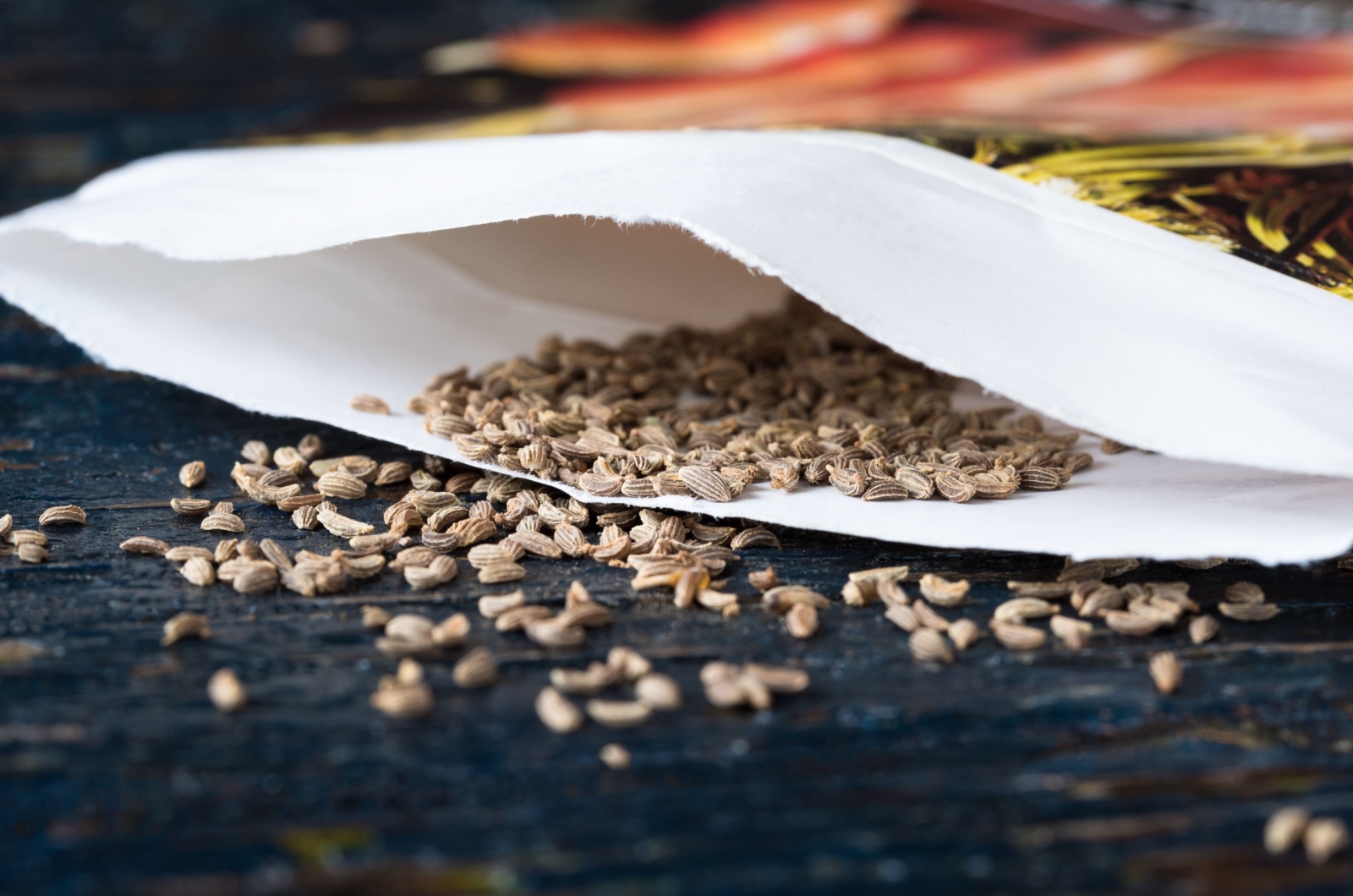The perfect little house with a herb garden below the kitchen window isn’t just a dream anymore! You can easily make a small, woody green patch regardless of your gardening skills or available space.
The best thing about these plants is that they can thrive anywhere: in a traditional in-ground or container garden, on a window ledge, or even a raised bed.
All you need is goodwill and a great idea.
Hopefully these can inspire you!
10 Herb Garden Ideas
These herb-growing ideas are perfect for any garden and gardener, whether you just want a plant for your window box or to fill an entire patch with herbs.
You’ll find some excellent tips for setting it all up and maintaining a beautiful garden if that’s what you’re going for. You can grow herbs with purple blooms or combine them with colorful flowers.
Let’s see some other options!
1. Grow The Herbs You Love And Use
Herbs are lovely, but their primary purpose is being used in cooking. Therefore, you should plant the varieties you love to cook with as you’ll devote more time to caring for them, especially if you’re a beginner.
Additionally, there’s no point in growing certain herbs, such as cilantro, if you can’t stand their taste and won’t ever use them in the kitchen.
Another thing you can try out is growing herbs that you can’t easily find in the store. Those don’t have to be rare species that are almost impossible to care for.
Perhaps they’re just variations on the herbs you enjoy the most, such as chervil.
You should also plant plenty of them. It’s quite demotivating seeing all your oregano or rosemary taken down by wind, rain, or cold.
Start the seeds indoors and transplant the young plants once their time comes. And for a larger harvest, plant more seeds directly into the soil at the time of transplanting.
Don’t be afraid to plant a couple of herb varieties, even if you’re a beginner. Go with species that have similar needs, such as basil and parsley, or sage and rosemary.
Pro tip: Woody herbs such as sage, rosemary, thyme, and lavender are excellent low-maintenance plants that you can forget about as soon as they establish.
2. Plant Them In A Sunny Spot With Good Drainage
The first thing you need to do after getting the herb seeds is find the best place for them in your garden.
Herbs need full sun and well-drained soils, claims horticulture educator and author Pam Bennett. That’s the most important thing.
Therefore, you should look for a location that gives them this so they can produce the natural oils responsible for their exquisite fragrance and taste. An abundance of flowers attracting bees and butterflies is just icing on the cake.
Another thing about the location is that many herb types don’t tolerate heavy, constantly moist, and excessively fertile soils. This is especially true for Mediterranean species such as lavender, sage, thyme, and rosemary.
This makes them incredibly easy to plant as you don’t have to amend your soil too much. Just include some draining materials if you have clay soil, and plant them in mounds so that excess moisture after rain or watering can drain faster.
You can also plant them in raised beds for more drainage, and add some compost if your garden soil is too dry.
3. Plant Them In Pots
Growing herbs in pots is a great method if you want to have more control over conditions such as drainage, sun exposure, temperature, etc.
This method is perfect for those who don’t have enough space for an entire garden because pots can fit pretty much anywhere.
You can easily move them around to ensure they get plenty of sunshine. This is actually the main advantage of pot planting since you don’t have to worry whether your plants are getting everything they need.
You can also take them indoors if the weather turns bad. This is especially important when growing basil and similar herbs since they cannot tolerate freezing temperatures and heavy winds.
Another thing that makes this method so beneficial is that you can place the containers near your kitchen for easy access when cooking, or on a patio or balcony where you can enjoy their wonderful scent.
There’s only one hiccup when it comes to growing herbs in containers – watering. Since pots drain faster than soil, you’ll have to irrigate your plants more frequently.
But if you choose drought-tolerant species such as rosemary, thyme, or lavender, you can avoid this issue.
Finally, all herbs grow well in planters, whether you want a soft basil or a woody rosemary. If you want to go the extra mile, you can scatter them around to give your home more character or use them as fragrant table decorations.
4. Make A Herb Container Garden
Container gardening is an excellent solution to a lack of space, but it goes beyond that. You can make potted herbs a statement piece of your landscape.
Modern square planters will give a great contrast to the natural wildness of the herbs spilling over the rims. But this isn’t the only option; you can choose planters that fit your garden’s style to create a truly unique garden.
When starting a herb container garden, there are a couple of things you need to bear in mind. The first one is choosing the right soil. Go for a well-draining organic potting mix, which will do wonders for your herbs.
Remember to water them more frequently than your in-ground varieties. More often than not, it is inadequate watering that does these plants the greatest harm.
Irrigate your potted herbs thoroughly and infrequently. Too little water administered too often isn’t the best practice. Moisture needs to reach their roots, so keep pouring until you see it draining out through the potholes.
Of course, some herbs need more water than others, so always check the topsoil to see whether the plant has used up the previous batch and needs more. If the first couple of inches of the medium are dry, water it!
And don’t forget to position your container garden in a sunny spot. These plants need their vitamin D to thrive and produce the tastiest and most fragrant foliage!
However, if your full-sun location is also exposed to harsh winds, you should find some other place that gets plenty of light since this can hurt your herbs. You can also make your own wind protection.
But don’t let this discourage you. Most herbs are incredibly easy to grow, particularly the drought-resistant varieties that you can forget to water.
5. Repurpose Unused Items And Make Them A Focal Point
By now, we know that herbs flourish in containers, but that word can mean numerous things. You can get store-bought ones, terracotta pots, modern planters, etc.
You can also reuse some of your old stuff you thought about throwing away!
Old bathtubs, sinks, and tureens are perfect for larger or smaller designs. Wooden barrels will add a vintage or pub-like feature to your garden, while old wheelbarrows and bicycles are perfect for a unique display.
You can even repurpose vintage chimneys and fill them with trailing rosemary for a true statement piece.
Of course, old enamel or ceramic bowls are more than welcome in this kind of design. Just make sure you drill some holes in all these recycled pots so that your herbs can have adequate drainage.
You’ll mask your shortage of space by turning your unique herb display into a focal point of your garden, combining aesthetics with utility.
6. Use Hardy Herbs For Bordering
An informal and fragrant lavender hedge may be the exact thing your garden needs. Or you can use some other woody herb to elevate your landscape.
It is an excellent way to border your flower beds without creating too much definition. Even if you shape them into rounded forms, they’ll still provide a laid back feel.
Spacing and herb variety are two things you need to bear in mind when starting a herb hedge.
Use herbs with an upright growing habit. This means avoiding trailing varieties as they’ll just drag across the floor.
Once you find the herbs you want to use as a hedge, plant them about 1-2 feet apart, depending on their mature size. You don’t want them intertwining with the neighboring plant since this will reduce air circulation and increase the risk of fungal diseases.
As for maintenance, simply prune them once they finish flowering. Just remember not to remove any of the old wood.
If you cut into the old wood, which does not have any leaves, and new leaves do not grow, then it will not survive, warns British horticulturist Monty Don.
And if you’re after an even softer, more laid-back, unruly, and informal look, soft curly parsley and chives are excellent choices.
Oregano is a great ground cover that softens the harsh lines between plant beds and garden pathways, and is sprinkled with pink flowers in spring and summer.
You can create a fluffy edge by planting dill or fennel. Just bear in mind that fennel is allelopathic, which means it can slow down or prevent germination and the growth of various plants. (1)
7. Mix Them With Colorful Flowers
A single look at a herb garden can fill you with a calming effect, mostly due to the soft green and silvery tones interspersed with subtle blue, pink, white, or purple.
These shades cannot create the most vibrant landscape, but interplanting some colorful flowers with these herbs certainly can!
My personal favorite is creating a container garden so that you don’t have to worry about which plants you can grow together according to their needs. That way, I can grow lavender and petunias close together without worrying about their watering needs.
You can choose trailing rosemary or thyme for a more striking look, and add daisies and cosmos to complete the picture.
Just irrigate and fertilize them according to their respective needs, and you’ll have a gorgeous garden in no time!
Finally, herbs usually have a long flowering season, and you can prolong it by planting them alongside other perennials. For instance, Russian sage and lavender are excellent companions, while rosemary and thyme love growing next to each other or santolina.
8. Don’t Be Afraid To Use Some For Their Looks
I know I said that you should start your herb gardening journey by planting herbs you’ll use in your kitchen, but these don’t have to be the sole inhabitants of your yard.
The striking shape, texture, and fragrance of lavender, rosemary, and thyme makes them perfect for both modern and scented gardens. There are also many plants that look like lavender and will add color and diversity to your garden.
They’ll surprise you with a gentle flush of pink, purple, light blue, or white flowers, enhancing the beauty of your borders or sunny beds.
Sage is another excellent choice. It’s grown mostly for its fragrant silvery-green leaves, but it’ll also produce purple-blue flower spikes. If you want a softer look, then feathery dill with its large, flat, and yellow flower heads is the way to go.
Combine these with vivid orange California poppies and lilacs for a gorgeous display, or choose the flowers and shrubs you fancy.
There are also herbs with edible flowers that look amazing in flower beds, and you can use them to garnish your salads. Marigolds, borage, cornflower, and bee balm are just some of the summer staples.
9. Choose Raised Beds
One way to use your entire garden surface is by building some raised beds. That way, you can put a paved corner or some infertile land to very good use.
This method is perfect for growing herbs. Raised beds drain faster than a regular in-ground garden and you can fill them with any type of soil you want.
They can also look lovely in just a few steps. Use woven willow edging for a more rustic look or large wooden planks for a more modern appearance.
Another thing to look out for is practicality. You’ll need to be able to access the herbs, so consider the depth of the raised bed. If it’s too deep, consider adding some stones to make it more reachable.
Planting herbs in their height order is also a great choice. Place the shorter herbs at the front and near the edges, and taller ones in the middle and back for easier access.
Or you can just group the herbs based on their requirements for easy care.
Finally, there’s no need to fertilize these plants. Whether using synthetic or natural fertilizers, fertilizing herbs boosts their growth and reduces their flavour somewhat, reminds Albert Mondor, an ornamental horticulturist.
10. Or Go Vertically
Hanging baskets, wall planters, window boxes, and plant shelves are excellent ways to utilize the little space you have in your garden.
You can even create a living wall where creeping herbs will flourish, or use a vintage ladder to stack pot upon pot.
If you want more plants, you can easily grow them from cuttings and save some space that way. A glass doesn’t take up too much space and it’s all you’ll need to propagate herb cuttings.
This is an even better method than starting the herbs from seeds, at least when it comes to woody varieties such as lavender, rosemary, or thyme.
Additionally, you’ll get young and tiny plants that don’t require that much space, so you’ll be able to place them pretty much anywhere with adequate sunlight.
And if you don’t have any herbs yet, it’s much better to buy small plants than seeds. They require much less maintenance and are perfect for beginners.
You just have to be mindful of the space, however small. For instance, parsley requires a large container because of its deep taproot, while mint needs a big planter as it grows like crazy and can quickly overtake any setting.
Essentials You Need For A Herb Garden
Beginner-Friendly Herbs
All herbs are generally fuss-free and easy to grow, which makes them perfect for beginner gardeners.
Some of the easiest ones to start with are:
• Trailing rosemary – a popular culinary herb and low-maintenance ornamental.
• Sage – simply ensure it gets plenty of sunshine and it’ll thrive.
• Parsley – winter-hardy and an excellent addition to many meals, from salads to stews. Both its leaves and stems are flavorful, and a single plant can last for up to two years. It’s also much cheaper growing your own than buying it in the store.
Hopefully these tips can help you out on your new gardening journey!
Until next time!
References:1. Nourimand, M., Mohsenzadeh, S., Teixeria da Silva, J., & Saharkhiz, M. J. (2011). Allelopathic Potential of Fennel (Foeniculum Vulgare Mill.). Medicinal and Aromatic Plant Science and Biotechnology.


